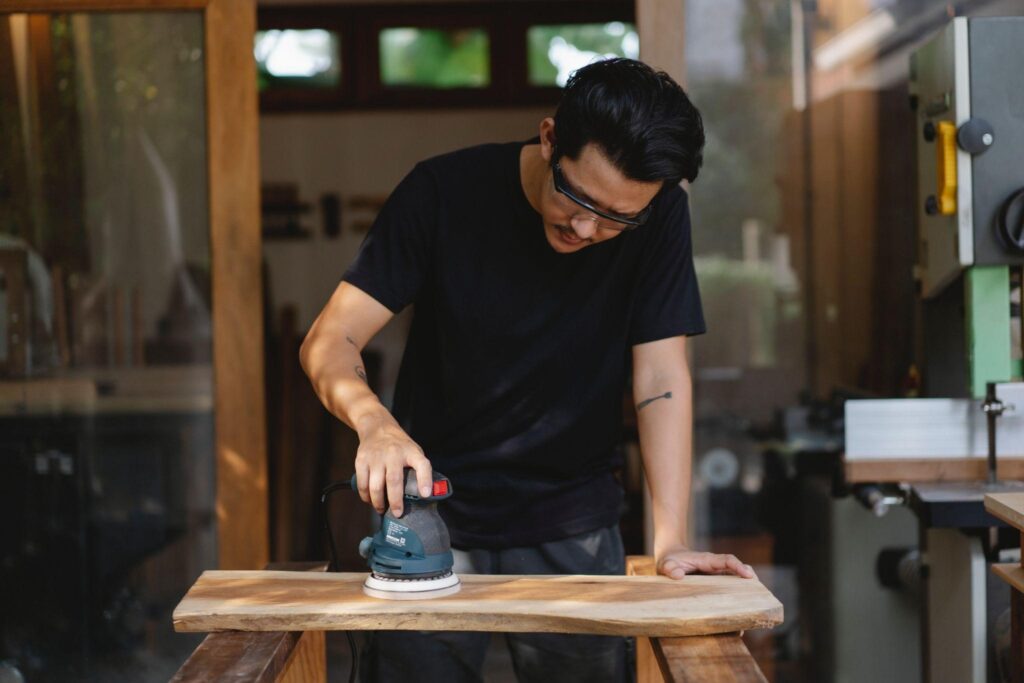
If you’re a hobbyist and beginner woodworker, choosing your first tools is a tricky business. The sheer number of options available, along with the fact that they don’t all have to be bought at once, can make buying them even more confusing than you’d expect. So, what should you look for? How do you know which machines are right for your needs? In this guide, we’ll give some general advice about choosing woodworking equipment and point out some things to consider when picking out each type of machine. We’ll also talk about why it’s often better to buy used machines instead of new ones if money isn’t an issue.
#1 – The table saw
The table saw is probably the most important tool in your shop. It can do everything from cutting boards to ripping lumber, and it’s also used for many other tasks like resawing and crosscutting. There are a lot of features that make one table saw better than another, but we’ll get into those later!
First things first: what exactly does this thing do? Well, it cuts things with blades rotating at high speed–that’s pretty much all there is to it! But there’s more than one type of blade available for these machines as well as different ways you can change their orientation during use (such as left-tilt vs right-tilt).
#2 – The jointer
A jointer is a woodworking machine used to straighten and flatten the edges of boards. It’s common for jointers to be used in conjunction with other tools, such as a table saw or bandsaw.
Jointers come in various sizes and styles; they can be manual or powered by electricity, so it’s important that you choose one that suits your needs. If you’re just starting out as a DIYer (do-it-yourselfer), then an entry-level model might be best for you. If your budget allows for it, however, investing in a high-end model will ensure accuracy when making cuts on long pieces of lumber or trimming down any imperfections in their surfaces.
#3 – The planer
The planer is used to smooth the surface of wood. It cuts the wood in a straight line and levels the surface, removing small amounts of material from both sides of a board at once. The planer can also be used to remove a small amount of material from one side of a board while leaving its thickness unchanged on the other side, which is more common when working with softwoods like pine and fir.
There are many different models available but they all do pretty much the same thing: make your work look better by removing any irregularities or imperfections before finishing it off with sandpaper or another type of tool like an orbital sander (more on those later).
#4 – A router table
A router table is a must-have for any woodworker. You can use it to make custom wood joints, custom wood moldings and trim, as well as inlays. A router table or a mini router table allows you to customize your projects in ways that are impossible with other tools.
A good example of this is when you’re building cabinets or furniture with drawers that need hinges installed on them. With other tools such as a drill press or jigsaw (or even just by hand), it would be difficult if not impossible to get those hinges exactly where they need to go so that when you open up those drawers they don’t rub against each other and jam up the whole drawer mechanism. With a router table though? It’s no problem! All you need is some good quality bits made specifically for cutting out small pieces like this one here…and boom! You’ve got yourself some nice looking custom-made drawers without having spent hours trying unsuccessfully at getting everything just right.”
#5 – A drill press
A drill press is a stationary tool that can be mounted to a workbench. It’s used for drilling holes in wood, and it’s especially useful for beginners because it’s easy to use. A drill press allows you to make holes of any size, which is handy when you’re starting out with woodworking projects.
Takeaway:
The takeaway is the final message of your article. It’s a summary of all the main points you’ve made and should include actionable information for your readers.
If you’re writing an article about how to choose the best woodworking machines, for example, then your takeaway will likely be something like: “Here are some things to consider when choosing a new machine.”
Conclusion
We hope that this guide has helped you make an informed decision about which woodworking machine is right for your project. As you can see, there are a lot of factors to consider when choosing a new machine. In order to find out which one is best for you, we recommend reading as much information about woodworking machines as possible, including our buying guide.